Zinc restores functionality in porcine prepubertal Sertoli cells exposed to subtoxic cadmium concentration via regulating the Nrf2 signaling pathway
- PMID: 36843583
- PMCID: PMC9950629
- DOI: 10.3389/fendo.2023.962519
Zinc restores functionality in porcine prepubertal Sertoli cells exposed to subtoxic cadmium concentration via regulating the Nrf2 signaling pathway
Abstract
Introduction: Among substances released into the environment by anthropogenic activities, the heavy metal cadmium (Cd) is known to induce severe testicular injury causing male subfertility/infertility. Zinc (Zn) is another heavy metal that, unlike Cd, is physiologically present in the testis, being essential for spermatogenesis. We aimed to examine the possibility that 50 µM ZnCl2 could counteract the toxic effects induced by Cd in an in vitro model of porcine prepubertal Sertoli cells (SCs) exposed to both subtoxic (5 μM) and toxic (10 μM) concentrations of CdCl2 for 48 h.
Materials and methods: Apoptosis, cell cycle, and cell functionality were assessed. The gene expression of Nrf2 and its downstream antioxidant enzymes, ERK1/2, and AKT kinase signaling pathways were evaluated.
Materials and results: We found that Zn, in co-treatment with subtoxic and toxic Cd concentration, increased the number of metabolically active SCs compared to Cd exposure alone but restored SC functionality only in co-treatment with subtoxic Cd concentration with respect to subtoxic Cd alone. Exposure of Cd disrupted cell cycle in SCs, and Zn co-treatment was not able to counteract this effect. Cd alone induced SC death through apoptosis and necrosis in a dose-dependent manner, and co-treatment with Zn increased the pro-apoptotic effect of Cd. Subtoxic and toxic Cd exposures activated the Nrf2 signaling pathway by increasing gene expression of Nrf2 and its downstream genes (SOD, HO-1, and GSHPx). Zn co-treatment with subtoxic Cd attenuated upregulation on the Nrf2 system, while with toxic Cd, the effect was more erratic. Studying ERK1/2 and AKT pathways as a target, we found that the phosphorylation ratio of p-ERK1/2 and p-AKT was upregulated by both subtoxic and toxic Cd exposure alone and in co-treatment with Zn.
Discussion: Our results suggest that Zn could counteract Cd effects by increasing the number of metabolically active SCs, fully or partially restoring their functionality by modulating Nrf2, ERK1/2, and AKT pathways. Our SC model could be useful to study the effects of early Cd exposure on immature testis, evaluating the possible protective effects of Zn.
Keywords: Nrf2 signaling pathway; Sertoli cells; cadmium; oxidative stress; zinc.
Copyright © 2023 Mancuso, Arato, Bellucci, Lilli, Eugeni, Aglietti, Stabile, Pistilli, Brancorsini, Gaggia, Calvitti, Baroni and Luca.
Conflict of interest statement
The authors declare that the research was conducted in the absence of any commercial or financial relationships that could be construed as a potential conflict of interest.
Figures
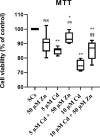
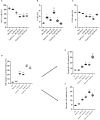

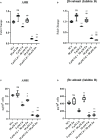
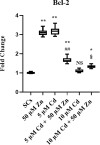
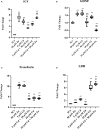

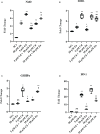
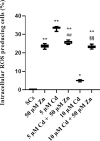
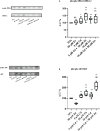
Similar articles
-
Melatonin modulates Nrf2 activity to protect porcine pre-pubertal Sertoli cells from the abnormal H2 O2 generation and reductive stress effects of cadmium.J Pineal Res. 2022 Aug;73(1):e12806. doi: 10.1111/jpi.12806. Epub 2022 May 24. J Pineal Res. 2022. PMID: 35524288 Free PMC article.
-
Protective Mechanism of Sulforaphane on Cadmium-Induced Sertoli Cell Injury in Mice Testis via Nrf2/ARE Signaling Pathway.Molecules. 2018 Jul 19;23(7):1774. doi: 10.3390/molecules23071774. Molecules. 2018. PMID: 30029485 Free PMC article.
-
Effects of Titanium Dioxide Nanoparticles on Porcine Prepubertal Sertoli Cells: An "In Vitro" Study.Front Endocrinol (Lausanne). 2022 Jan 3;12:751915. doi: 10.3389/fendo.2021.751915. eCollection 2021. Front Endocrinol (Lausanne). 2022. PMID: 35046890 Free PMC article.
-
Cadmium exposure induces rat proximal tubular cells injury via p62-dependent Nrf2 nucleus translocation mediated activation of AMPK/AKT/mTOR pathway.Ecotoxicol Environ Saf. 2021 May;214:112058. doi: 10.1016/j.ecoenv.2021.112058. Epub 2021 Mar 11. Ecotoxicol Environ Saf. 2021. PMID: 33714136
-
The molecular and biochemical insight view of grape seed proanthocyanidins in ameliorating cadmium-induced testes-toxicity in rat model: implication of PI3K/Akt/Nrf-2 signaling.Biosci Rep. 2019 Jan 15;39(1):BSR20180515. doi: 10.1042/BSR20180515. Print 2019 Jan 31. Biosci Rep. 2019. PMID: 30355647 Free PMC article.
Cited by
-
Interplay of Ferroptosis, Cuproptosis, Autophagy and Pyroptosis in Male Infertility: Molecular Crossroads and Therapeutic Opportunities.Int J Mol Sci. 2025 Apr 8;26(8):3496. doi: 10.3390/ijms26083496. Int J Mol Sci. 2025. PMID: 40331931 Free PMC article. Review.
-
Bioactive Compounds Protect Mammalian Reproductive Cells from Xenobiotics and Heat Stress-Induced Oxidative Distress via Nrf2 Signaling Activation: A Narrative Review.Antioxidants (Basel). 2024 May 13;13(5):597. doi: 10.3390/antiox13050597. Antioxidants (Basel). 2024. PMID: 38790702 Free PMC article. Review.
-
Zinc and Its Impact on the Function of the Testicle and Epididymis.Int J Mol Sci. 2024 Aug 19;25(16):8991. doi: 10.3390/ijms25168991. Int J Mol Sci. 2024. PMID: 39201677 Free PMC article. Review.
References
Publication types
MeSH terms
Substances
LinkOut - more resources
Full Text Sources
Miscellaneous

